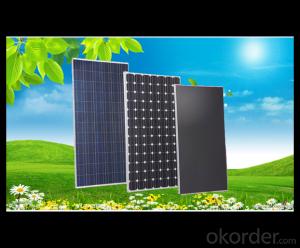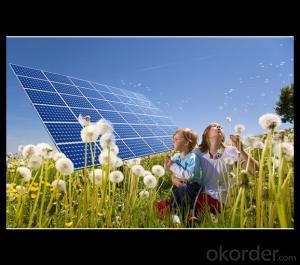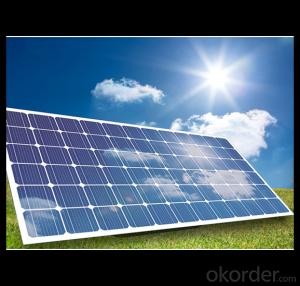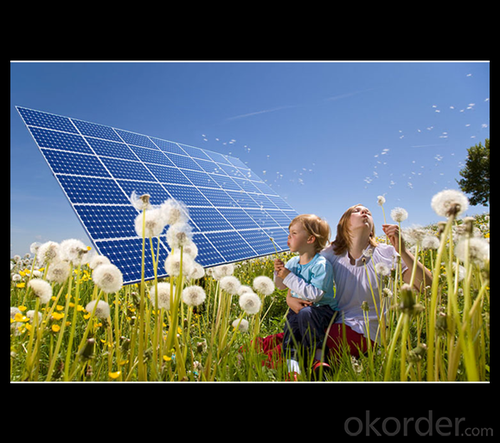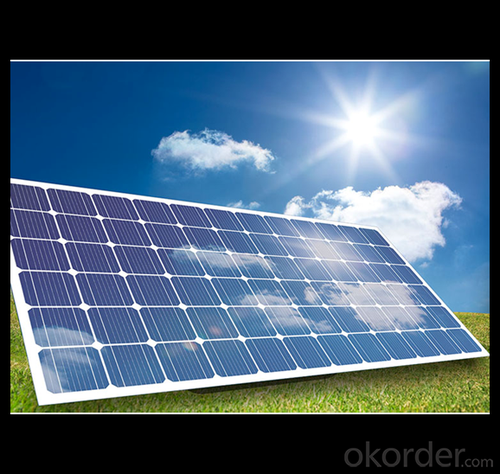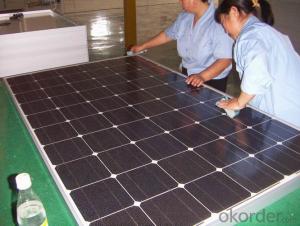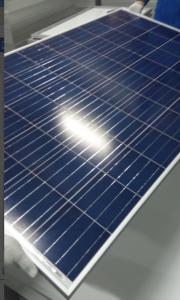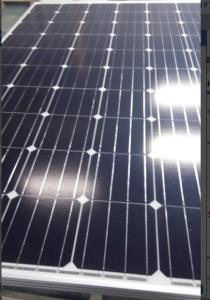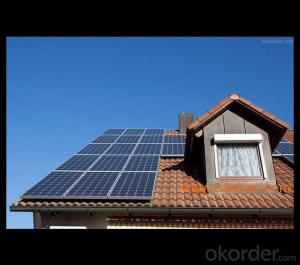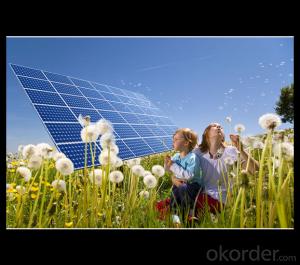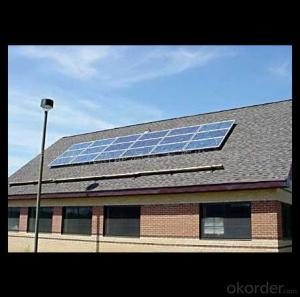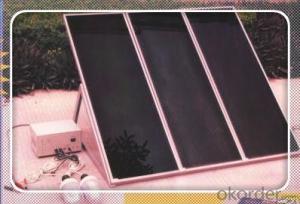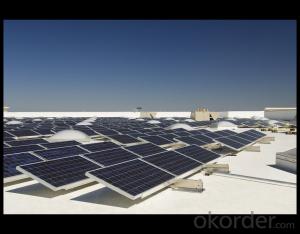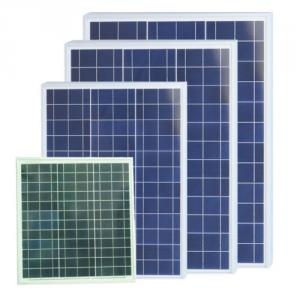Solar Panels for Sale Cheap:250w Direct Factory Sale Price 240-260watt Solar Panels
- Loading Port:
- China main port
- Payment Terms:
- TT OR LC
- Min Order Qty:
- 10000 watt
- Supply Capability:
- 100000 watt/month
OKorder Service Pledge
OKorder Financial Service
You Might Also Like
Specification
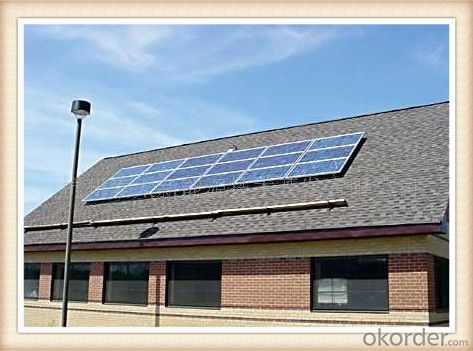
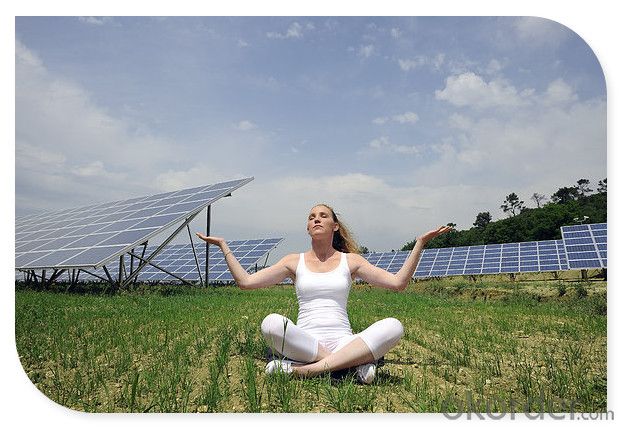
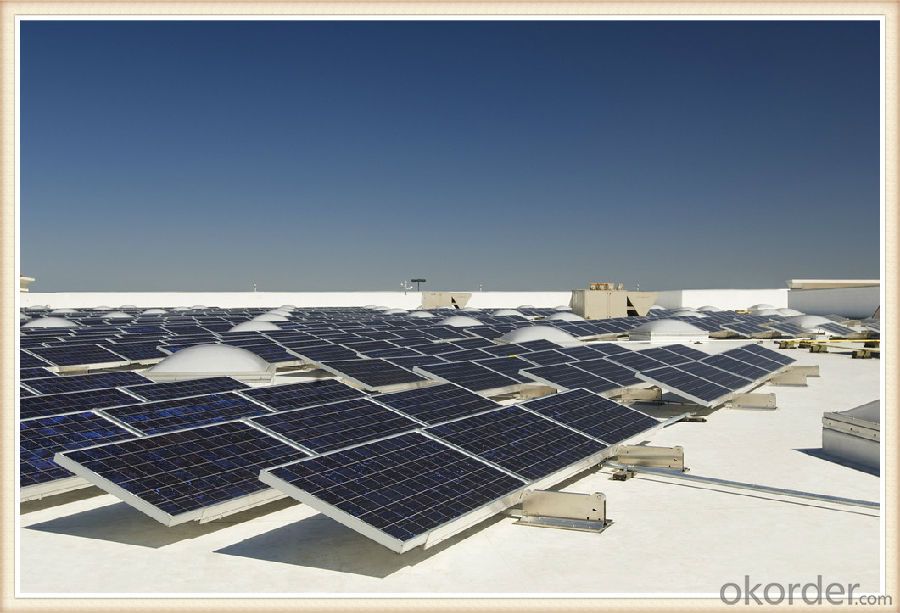
Solar Module Introduction
Solar modules use light energy (photons) from the sun to generate electricity through the photovoltaic effect. The majority of modules use wafer-based crystalline silicon cells or thin-film cells based on cadmium telluride or silicon. The structural (load carrying) member of a module can either be the top layer or the back layer. Cells must also be protected from mechanical damage and moisture. Most solar modules are rigid, but semi-flexible ones are available, based on thin-film cells. These early solar modules were first used in space in 1958.
Electrical connections are made in series to achieve a desired output voltage and/or in parallel to provide a desired current capability. The conducting wires that take the current off the modules may contain silver, copper or other non-magnetic conductive transition metals. The cells must be connected electrically to one another and to the rest of the system. Externally, popular terrestrial usage photovoltaic modules use MC3 (older) or MC4 connectors to facilitate easy weatherproof connections to the rest of the system.
Specification
Model Type | |
Peak Power-Pmax(W) | 5-200W |
Open Circuit Voltage-Voc(V) | 44.2 |
Maximum Power Voltage-Vmp(V) | 36 |
Short Circuit Current-Isc(A) | 5.4 |
Maximum Power Current-Imp(A) | 5 |
Maximum System Voltage | 1000V DC |
Maximum Series Fuse Rating | 10A |
Power Tolerance | -1~+3% |
Temperature Coefficients of Pmax | -0.45%/℃ |
Temperature Coefficients of Voc | -0.348%/℃ |
Temperature Coefficients of Isc | 0.031%/℃ |
Nominal Operating Cell Temperature | 44.5±2℃ |
Standard Testing Condition(STC) | Irradiance:1000W/m²;Temperature:25℃;AM=1.5 |
Qualification Test Parameters | |
Operating Temperature | -40℃~+85℃ |
Storage Temperature | -40℃~+85℃ |
Pressure Bearing | ≥5400Pascal/m² |
Wind Bearing | ≥5400Pascal/m² |
Mechanical Characteristics | |
Cell Size | Mono 125*125mm±0.5 |
No.of Cells | 72pcs(6*12) |
Dimension | 1580*808*40mm |
Weight | 15.5Kg |
Glass | 3.2mm High Transmission,Low Iron |
Frame | Anodized Aluminum Alloy |
Junction Box | IP65Rated |
Internal Diodes | 3 Bypass Diodes |
Cable | 1*4.0mm² Length 900mm |
Images
Packing & Shipping:
We have rich experience on how to pack the panels to make sure the safety on shipment when it arrives at the destination.
The normal size is packed by 25pcs/ carton / pallet. Paper carton for FCL shipping and wood carton for LCL shipping.
Features
1.High reliability with guaranteed -3% to +5% power output tolerance, ensuring return on investment
2.High conversion efficiency based on leading innovative photovoltaic technologies
3.Withstands high wind-pressure and snow load, and extreme temperature variations
4.Attractive appearanceUnique frame design, high mechanical strength, and easy Installation
Warranty:
For c-Si panel: 25years output warranty for no less than 80% of performance, 10 years output warranty for no less than 90% of performance. Free from material and workmanship defects within 5 years.
For a-Si panel: 20 years output warranty for no less than 80% of performance, 10 years output warranty for no less than 90% of performance. Free from material and workmanship defects within 2 years.
•100% product quality protection
•100% on-time shipment protection
•100% payment protection for your covered amount
FAQ:
(1)What price for each watt?
It depends on the quantity, delivery date and payment terms.
(2)What is your size for each module? Can you tell me the Parameter of your module?
We have different series of panels in different output, both c-Si and a-Si. Please take the specification sheet for your reference.
(3)Can you provide the peripheral products of the solar panels, such as the battery, controller, and inverter? If so, can you tell me how do they match each other?
Actually we are only manufacturer of solar panels, but we could try to source them for you in China if you need. We could provide you an optimal system design to instruct you how to install.
(4)Do you have the CE, TUV, UL Certification?
We’ve already passed all the tests, and any certificate is available.
(5)Have you ever sold your products to companies in my country?
Of course, we have customers in all general PV markets, but I think we should expand our market share along with the market growth.
(6)When did your company set up? You are a new company, how can I believe your quality?
We entered into Solar PV industry in 2005, now we have several plants in manufacturing of a-Si and c-Si panels, and our capacity is 220MW per year. Till now we have already passed all the tests by authorized laboratories, e.g. TUV, VDE, UL.
(7)Can you help us install the module if we cooperate with you?
We haven’t entered into installation sector, but we have the plan in near future.
(8) How do you pack your products?
We have rich experience on how to pack the panels to make sure the safety on shipment when it arrives at the destination.
(9) Can you do OEM for us?
Yes, we can.
(10)Can we visit your factory?
Surely, I will arrange the trip basing on your business schedule.
- Q: Any recommendation for best solar panels?
- I have 3 ARCO solar panels and a wind generator on the Boat and it's all I need to live comfortably on 2 volts.
- Q: Science homework! I need to explain how a solar panel works and draw a Sankey Diagram for the solar panel, can anyone show me a sankey diagram for a solar panel or explain how a solar panel works?? ILL GIVE U BEST ANSWER IF U HELP WITH BOTH =]
- Build okorder /
- Q: 200 watt solar panel generates how much watts of electricity per month?
- I've operated a 25 kilowatt (kw) solar panel system for two years (44 panels, rated at 90 watts each, just about like yours). It averages 0 kilowatt hours (kwh) per day, but clear days get about 60 kwh. My system generates about 3300 kwh per month (we dump directly to grid), worth about $4,000 per year. Payback for my system, which cost $00,000 (after utility rebates and tax credits), is 25 years (the expected lifetime, coincidentally). Under similar conditions, your 200 watt solar panel would average 820 watt-hours per day, or about 25 kwh per month, worth $2.50.
- Q: Can solar panels be used in combination with wind turbines?
- Yes, solar panels can be used in combination with wind turbines. This combination of renewable energy sources allows for a more reliable and consistent power generation, as wind and sunlight are complementary in nature. By integrating solar panels and wind turbines, the system can generate electricity during both day and night, as well as in varying weather conditions, maximizing energy output and increasing overall efficiency.
- Q: Can solar panels be damaged by birds or other animals?
- Yes, solar panels can be damaged by birds or other animals. Birds may build nests under the panels or peck at the wiring, leading to potential system malfunctions. Similarly, other animals like squirrels or rodents may chew on the wires or cause physical damage to the panels. It is advisable to take preventive measures to protect solar panels from such animal interference.
- Q: if car companies install solar panels on cars, like in all the car were the sun can reach that would reduce the consumption of gas in the summer, and might save some energy for winter and if that energy is not enough they can use gas or electricity i think that would be a lot of savings, and less contamination i don't know that is my idea what do you people think?
- I have a panel that might be a square foot or so plugged into my cigarette lighter. It will run the radio and help with reducing the amount of time the alternator needs to run, but won't completely run the vehicle. If I had an electric vehicle, I'd want to coat any large surfaces with them. Still wouldn't completely run the vehicle, but every bit would help.
- Q: Can solar panels be installed in areas with high wind speeds?
- Yes, solar panels can be installed in areas with high wind speeds. However, it is important to ensure that the solar panel mounting systems are designed and installed properly to withstand the strong winds. This may involve using appropriate mounting techniques, securing the panels firmly, and considering the orientation and tilt angles to minimize the impact of wind resistance.
- Q: Can solar panels be installed on a pole or ground mount?
- Yes, solar panels can be installed on both poles and ground mounts. Pole mounts are often used when there is limited space on the ground or when panels need to be elevated for better sunlight exposure. Ground mounts, on the other hand, are ideal for larger installations or when the ground is more suitable for anchoring. Both options offer flexibility in terms of placement and can effectively harness solar energy.
- Q: i need to cut down on electricity bills, and so i was wondering if someone could give me step-by-step instructions, or websites that have step-by-step instructions on how to build an electricity generating solar panel.
- The idea behind building your own was to get defective and broken solar cells from the manufacturer, preferably for free though many now charge for them. These are cells that are either cosmetically blemished, cracked or otherwise broken during manufacturing and transportation. As each cell fragment could have very different voltage and current characteristics, you have to manually measure the voltage and current characteristics, sort them and then wire them in parallel or in serial to achieve the desired voltage and current characteristics for the panel. Wiring in parallel increases the current while wiring in series increases the voltage, the current capacity of cells in series will be that of the lowest current capacity cell in that series hence you need to match fragments up to wire in parallel till you have enough current capacity to participate as a cell in the series. Cell fragments can only be wired in parallel if they have the same voltage output. It's painstaking work and it's difficult to place all the irregular shaped cells onto the solar panel in a layout that efficiently uses the space so your solar panels will likely be much larger than commercial ones. You could augment them with Fresnel lenses since the cells don't occupy as much of the available surface area hence focusing the light onto the cells rather than the board will help with efficiency. Practice your soldering skills cause you don't want to have to go back in to figure out where that cold solder joint is. If you're real lucky you can get a supply of blemished cells but the cheapest ones are the broken cells.
- Q: Can solar panels be used to power electric vehicles?
- Yes, solar panels can be used to power electric vehicles. Solar panels can convert sunlight into electricity, which can then be stored in a battery and used to power an electric vehicle. This helps reduce dependence on fossil fuels and promotes sustainable transportation.
Send your message to us
Solar Panels for Sale Cheap:250w Direct Factory Sale Price 240-260watt Solar Panels
- Loading Port:
- China main port
- Payment Terms:
- TT OR LC
- Min Order Qty:
- 10000 watt
- Supply Capability:
- 100000 watt/month
OKorder Service Pledge
OKorder Financial Service
Similar products
Hot products
Hot Searches
Related keywords
